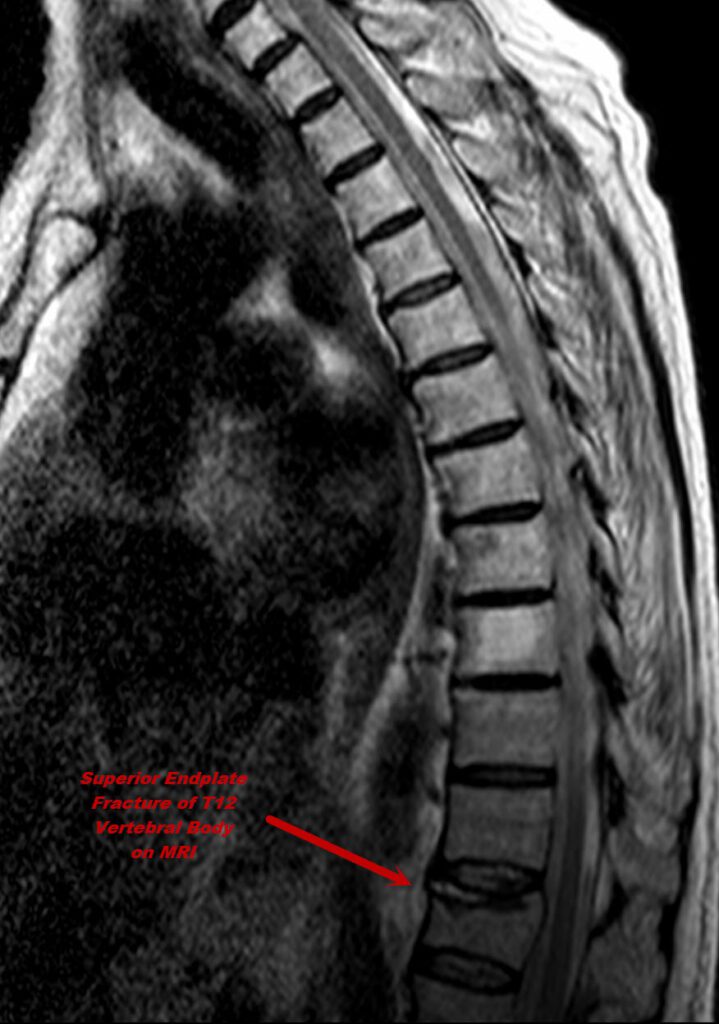Vertebroplasty
Vertebroplasty is a pain treatment for vertebral compression fractures that fail to respond to conventional medical therapy, such as minimal or no pain relief with analgesics or narcotic doses that are intolerable. Vertebroplasty, a nonsurgical treatment performed by interventional radiologists using imaging guidance, stabilizes the collapsed vertebra with the injection of medical-grade bone cement into the spine. This reduces pain, and can prevent further collapse of the vertebra, thereby preventing the height loss and spine curvature commonly seen as a result of osteoporosis. Vertebroplasty dramatically improves back pain within hours of the procedure, provides long-term pain relief and has a low complication rate, as demonstrated in multiple studies.
If the vertebra isn’t shored up, it can heal in a compressed or flattened wedge shape. Once this occurs, the compression fracture cannot be treated effectively. It is very important for someone with persistent spinal pain lasting more than three months to consult an interventional radiologist, and people who require constant pain relief with narcotics should seek help immediately.






About Vertebroplasty
Vertebroplasty was first performed in France in 1984 to treat compression fractures caused by bone cancer or bone metastasis, and later to treat compression fractures caused by osteoporosis. Percutaneous vertebroplasty was introduced in the United States in 1994 and has become widely available since 1997 as a treatment for pain associated with compression fractures due to osteoporosis. The procedure has been shown to provide continued pain relief for osteoporotic compression fractures. A 1998 study by Dr. Deramond and colleagues reported on 80 patients with rapid and complete pain relief in more than 90 percent of osteoporotic cases. The follow-up in this patient population ranged from one month to 10 years with evidence of prolonged pain relief. Vertebroplasty is likely to become a standard of care for treating osteoporotic compression fractures as more patients and physicians become aware of the new advances in interventional radiology.
Vertebroplasty is an outpatient procedure using X-ray imaging and conscious sedation. The interventional radiologist inserts a needle through a nick in the skin in the back, directing it under fluoroscopy (continuous, moving X-ray imaging) into the fractured vertebra. The physician then injects the medical-grade bone cement into the vertebra. Vertebroplasty takes from one to two hours to perform depending on how many bones are treated. The cement hardens within 15 minutes and stabilizes the fracture, like an internal cast.
Recovery
Some patients experience immediate pain relief after vertebroplasty. Most report that their pain is gone or significantly better within 48 hours. Many people can resume their normal daily activities immediately.
Second Opinion
Patients who have failed all other standard pain treatments and are still in severe pain can obtain a second opinion from an interventional radiologist. These experts in image-guided treatments are most qualified to determine who is a candidate for vertebroplasty. You can ask for a referral from your doctor, call the radiology department of any hospital and ask for interventional radiology or visit the doctor finder link at the top of this page to locate a doctor near you.
About Osteoporosis
Osteoporosis is characterized by low bone mass and structural deterioration of the bone resulting in an increased susceptibility to fractures. According to the National Osteoporosis Foundation, osteoporosis affects 10 million Americans and is responsible for 700,000 vertebral fractures each year. Multiple vertebral fractures can result in chronic pain and disability, loss of independence, stooped posture and compression of the lungs and stomach. Nearly all vertebral fractures in otherwise healthy people are due to osteoporosis, and can occur from a minor impact, such as a bump or a fall, in those who suffer from this bone-weakening disease. People who have a spinal fracture often don’t realize that they may have osteoporosis, because the disease is symptomless until a fracture occurs.
Risk Factors for developing osteoporosis include:
- Being female
- Being thin or having a small frame
- Advanced age
- A family history of osteoporosis
- Being past menopause
- Abnormal absence of menstrual periods
- Anorexia or bulimia
- A diet low in calcium
- Long-term use of medications such as corticosteroids or anticonvulsants
- Lack of exercise
- Smoking
- Excessive use of alcohol
THE SERVICES LISTED ON THIS WEBSITE ARE FOR GENERAL INFORMATION PURPOSES ONLY AND DO NOT INCLUDE ALL SERVICES OF FLORIDA INTERVENTIONAL SPECIALISTS. WHILE WE STRIVE TO KEEP THE INFORMATION UP TO DATE AND CORRECT, WE MAKE NO REPRESENTATIONS OR WARRANTIES OF ANY KIND, EXPRESS OR IMPLIED, ABOUT THE CONTENT, COMPLETENESS, ACCURACY, RELIABILITY, LEGALITY, SUITABILITY OR AVAILABILITY, WITH RESPECT TO THE SERVICES CONTAINED ON THIS WEBSITE.

